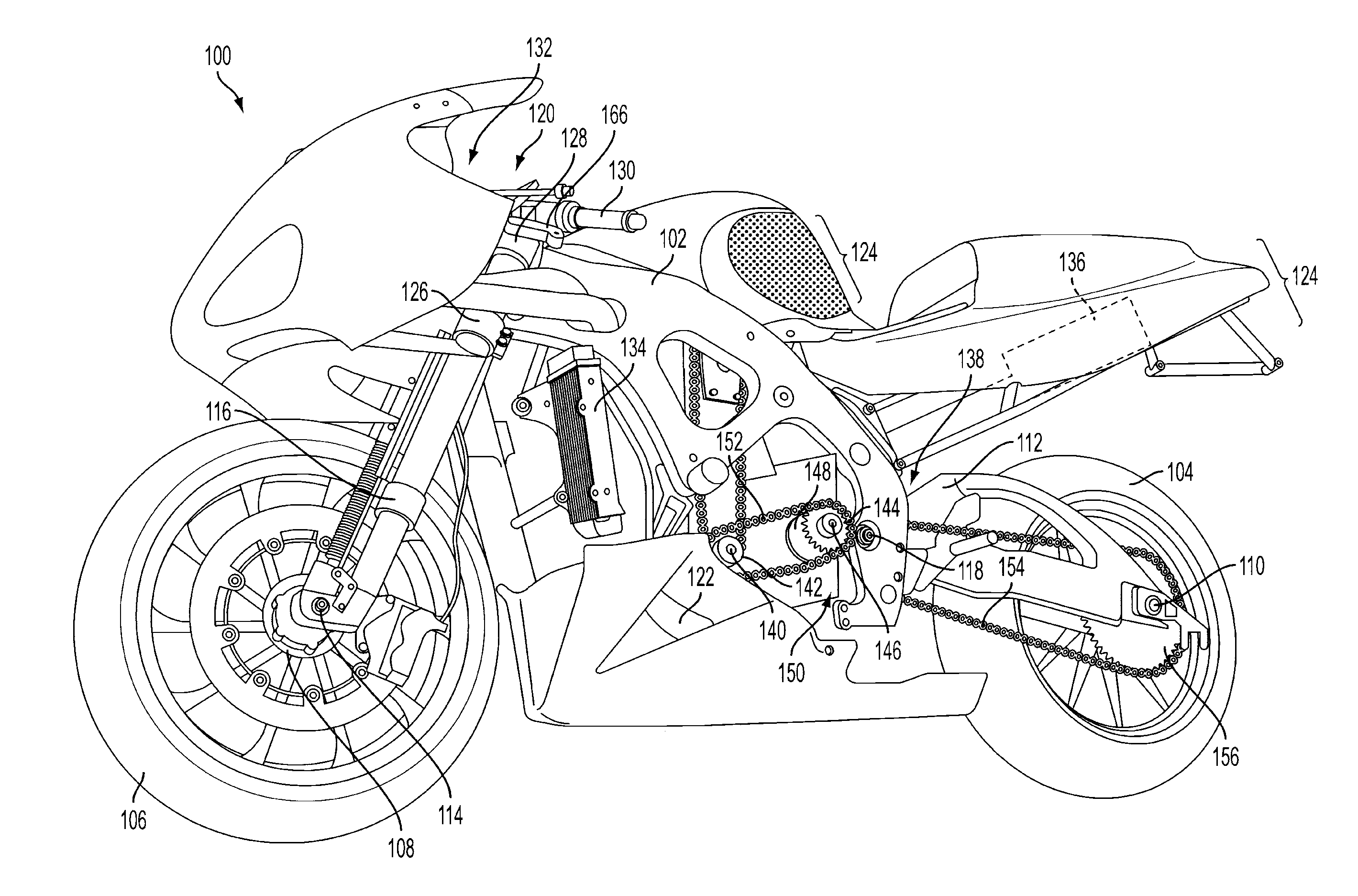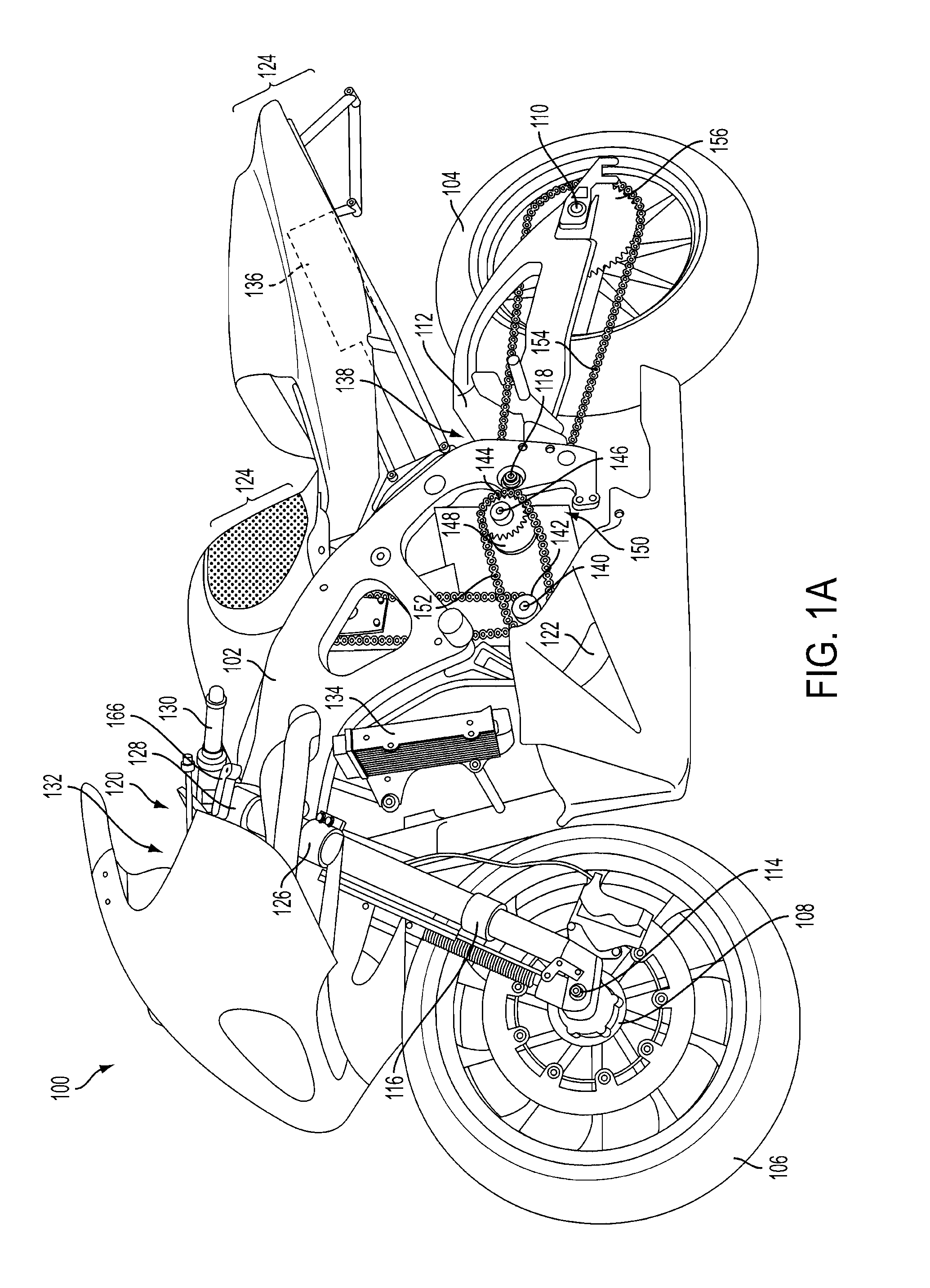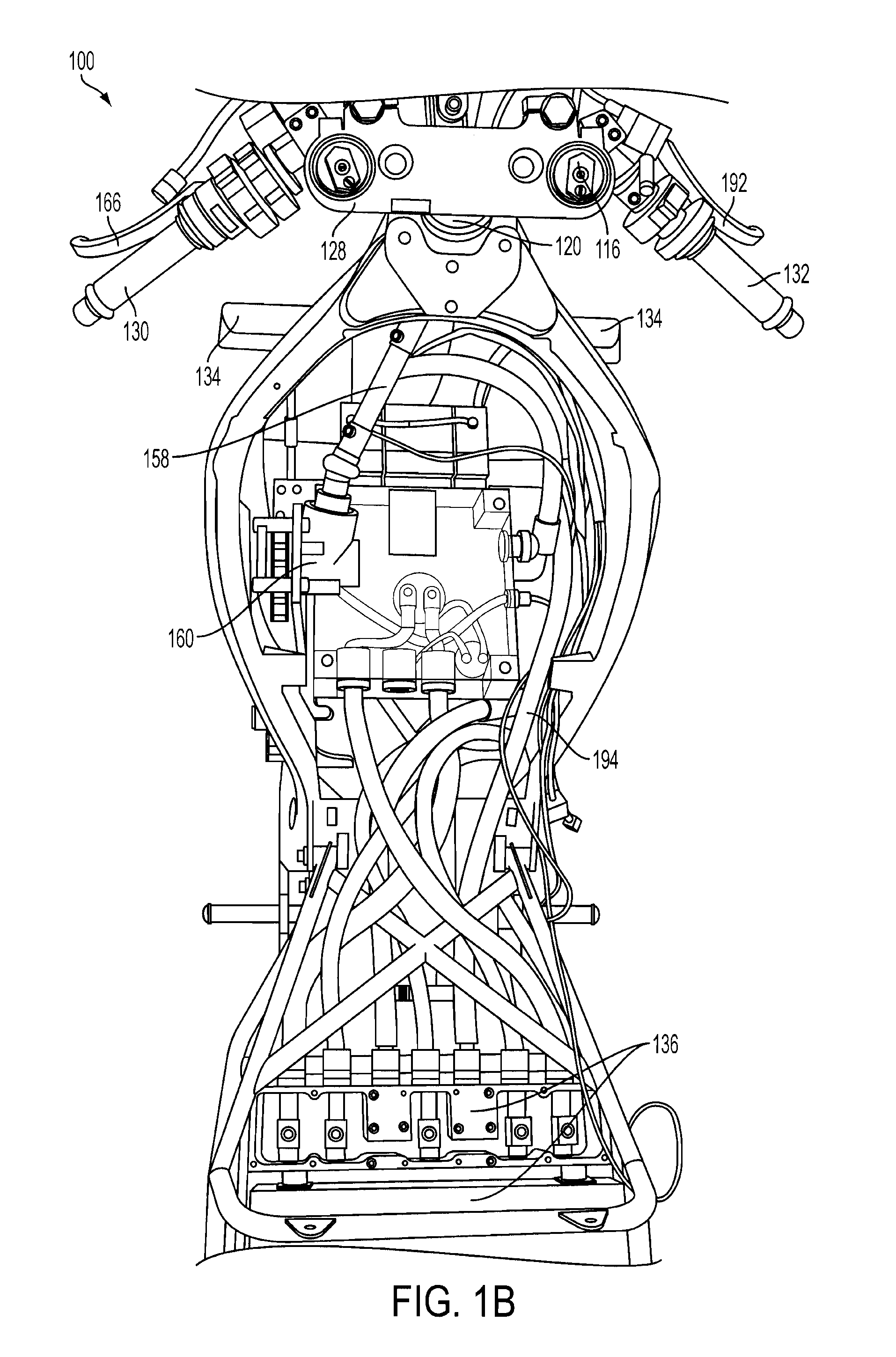One major concern with using electric motors in vehicle design is battery life and battery size, which impact vehicle power and range, especially on motorcycles where space to accommodate batteries is extremely limited.
Battery size becomes a key issue as consumers are demanding that electric vehicles operate at extended ranges that require larger and thus heavier batteries that are more costly and are not conducive to small vehicles such as motorcycles.
Today's battery technology does not provide for long duration sufficient to make an electric two or three-wheeled vehicle competitive with its gasoline powered counterparts, and so manufacturers have been slow to produce electric motorcycles.
Kinetic energy recovery has been developed for electrically powered four-wheel production and race vehicles, but the systems developed for four-wheel vehicles (hereinafter “cars”) are not able to be effectively utilized in motorcycles due to issues relating to size, weight, vehicle stability, and for additional and non-obvious reasons.
One fundamental problem of wheel motors is they must be of a large enough capacity to harvest a meaningful amount of energy sufficient to justify their weight and cost.
To capture this energy for use in battery charging would require a 150 horsepower wheel motor to be installed inside the front wheel, which would weigh more than 100 lbs and be extremely expensive.
Additionally, the effect of adding more than 100 lbs to the front wheel of a motorcycle would create an extremely unstable and dangerous vehicle dynamics situation, since steering, balance, wheel size, and unsprung weight are all degraded considerably, assuming the bulky 150 horsepower motor could even be packaged inside a front wheel in the first place.
Yet despite the steady increase of manufacturer interest in electric cars and the ease with which they may deploy a KERS system on their front wheel drive designs, electric motorcycles are extremely rare, and almost none of those that have been built use any kind of regenerative braking systems.
This is because conventional wisdom in the field of electric motorcycles holds that since the electric motor is mechanically coupled to drive the rear wheel (where there is little regenerative benefit under braking due to the light loading of the rear wheel as previously discussed) such systems are ineffective on a motorcycle.
To the knowledge of the inventors of this application, no one in the art of electric motorcycle design has even recognized and certainly not addressed the problem of how to recover the abundant energy available from the front wheel of a motorcycle under braking, which is otherwise wasted as heat.
Another factor that has caused the electric motorcycle industry to ignore KERS systems is the very high crash danger arising from the use of rear wheel regeneration because applying any braking torque to a lightly loaded rear wheel, especially when leaning into a turn, easily locks up the wheel and causes rapid loss of traction and control.
Other KERS system constructions may be used such as via hydraulic accumulators or flywheel storage, but like wheel motors, each have drawbacks that render them inappropriate for motorcycle applications.
The use of a high pressure accumulator sufficient to provide a meaningful KERS system benefit on a motorcycle, coupled with the inefficiencies inherent in this type of accumulator system make it impractical for a motorcycle.
While this is a noteworthy improvement in fuel economy, the packaging and handling impact on a motorcycle with a 40,000 RPM flywheel mounted to it combined with the extreme cost, cooling requirements, and limited energy storage make flywheels impractical for motorcycles.
The application of gears, shafts, pumps and other such structures to the front wheel and suspension of a motorcycle presents a number of challenges as it is easy to upset the safe handling characteristics of a two or three-wheeled vehicle, which are more sensitive to such changes than are cars.
U.S. Pat. No. 6,505,699 does not disclose or provide any teaching on recovering energy from the front wheel for use in recharging batteries or for any other purpose, and actually precludes such energy transfer by the teaching of one-way freewheel sprag clutches in the front wheel that operate to allow the motor to drive the front wheel but do not allow the front wheel to back drive the motor for regeneration.
Additionally, U.S. Pat. No. 6,505,699 does not even disclose implementation in an electric powered vehicle.
It is clear that manufacturers and inventors of electric motorcycles have failed to recognize and address the problem of recovering kinetic energy from the front wheel.
Limited efforts have been made to implement rear wheel KERS systems, but the poor regeneration provided by the lightly loaded rear tire have led most to abandon the pursuit of on-board recharging altogether.
Industry experts have been quoted as saying that KERS systems on a motorcycle are a waste of time.
Unfortunately, the limited battery capacities available in the current state of the art combined with the industry's failure to recognize or employ the front wheel as a source of significant recharging energy, has combined to relegate the fledgling electric motorcycle industry to novelty status with an uncertain future due to limited vehicle range and performance.
 Login to View More
Login to View More  Login to View More
Login to View More 


